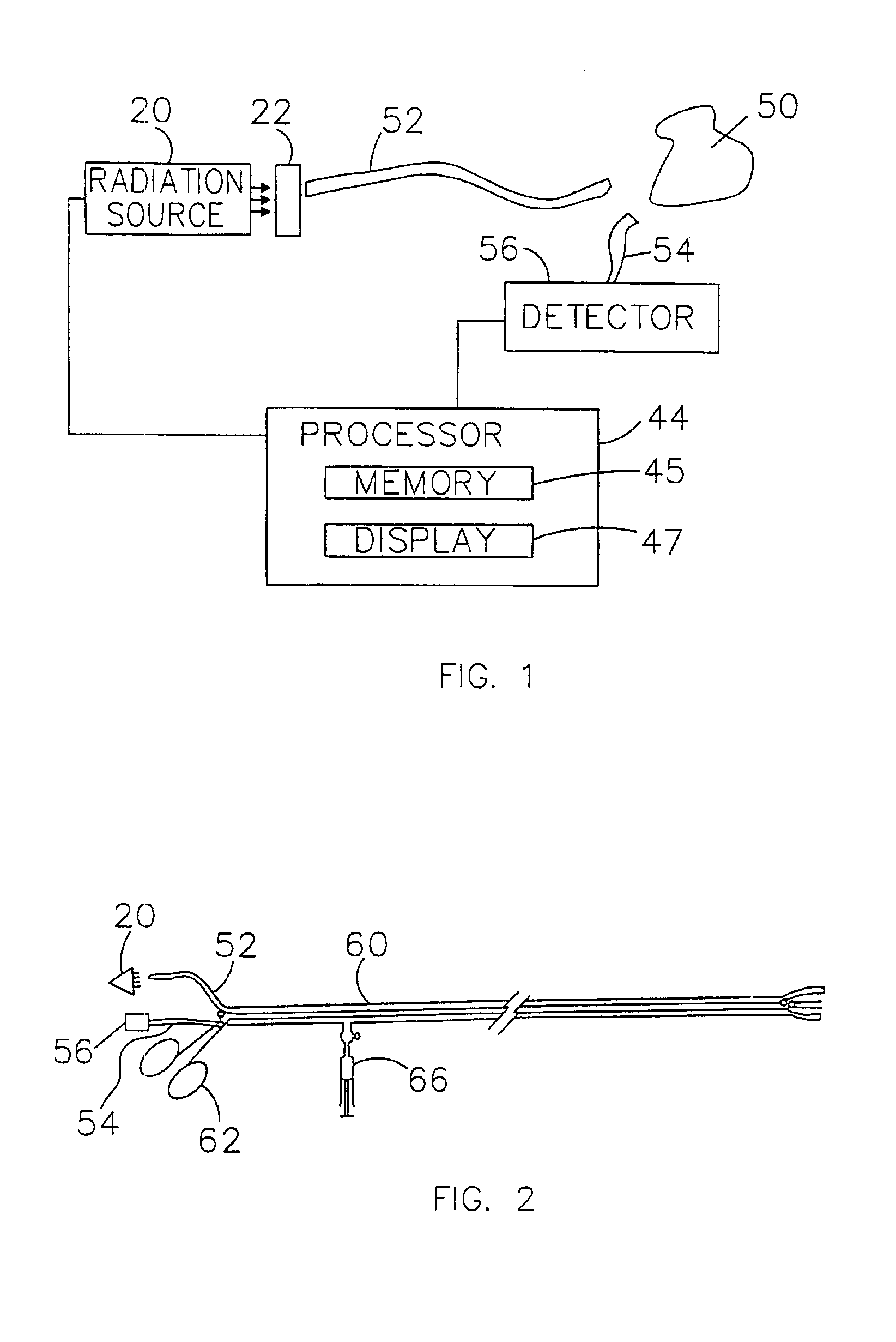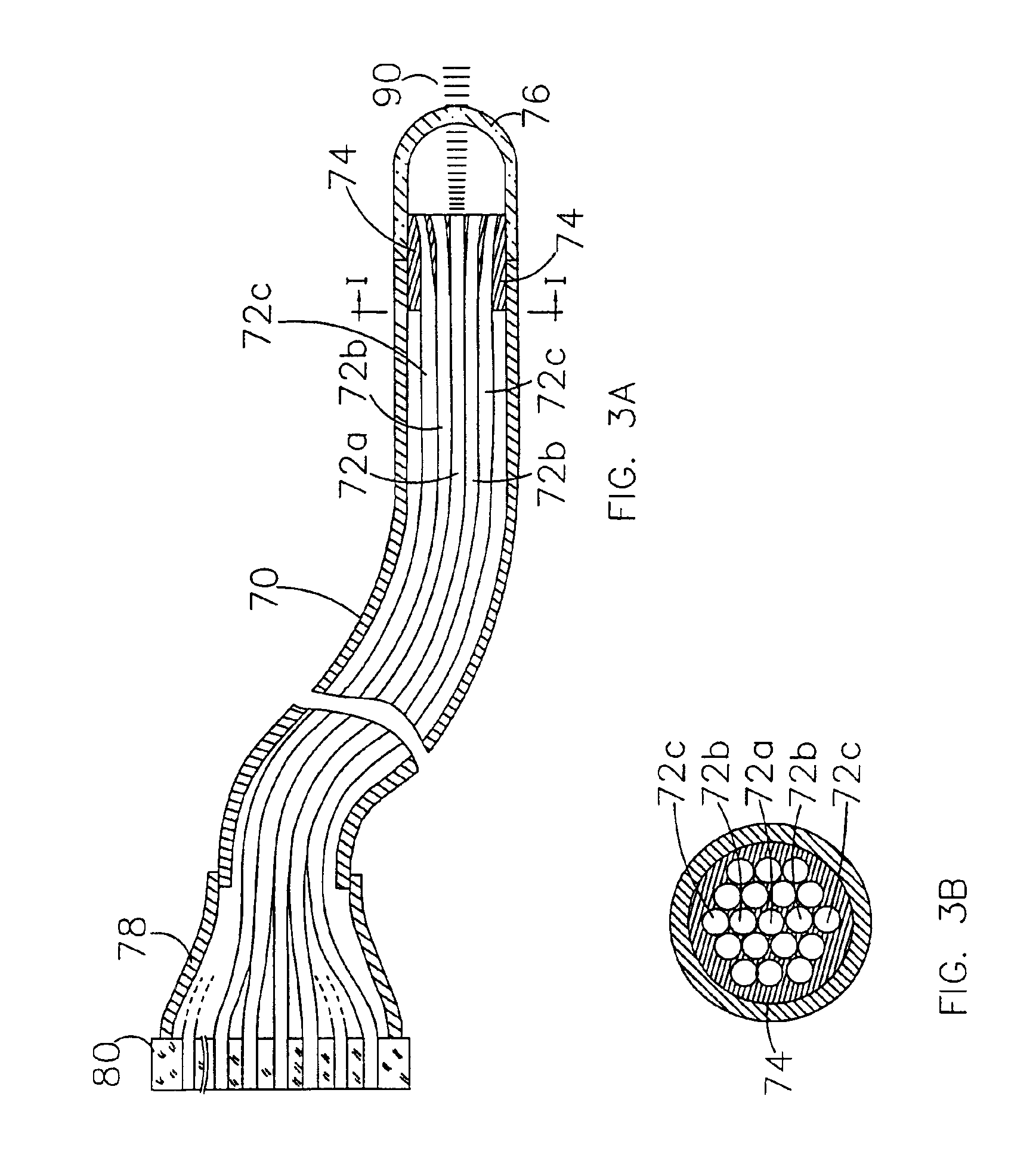Multi-modal optical tissue diagnostic system
a tissue diagnostic and optical tissue technology, applied in the direction of fluorescence/phosphorescence, therapy, diagnostics using spectroscopy, etc., can solve the problems of insufficient assessment of tissue characteristics, insufficient absorption spectroscopy alone, and insufficient morphological changes due to disease, etc., to achieve accurate diagnosis of tissue condition and accurate measurement of tissue characteristics. , the effect of accurate tissue diagnosis
- Summary
- Abstract
- Description
- Claims
- Application Information
AI Technical Summary
Benefits of technology
Problems solved by technology
Method used
Image
Examples
Embodiment Construction
[0037]In the prior art methods in the Background of the Invention Section, the information content of the interaction of light (and consequently the spectroscopic method used) is, generally speaking, specific to the type of change in tissue. That is, tumorous tissue differs from normal tissue in several ways. Tumorous tissue is generally derived from normal tissue after the latter has undergone several changes. These changes can be induced by various intrinsic and extrinsic factors. These include the presence of certain inherited traits, chromosomal mutation, virus induced malignant transformation of cells and the mutagenic effects of UV and X-ray irradiation, to name a few.
[0038]The earliest changes that occur in the course of normal cells becoming malignant are biochemical. One of the first changes noted is that of increased glycolytic activity which allows tumors to grow to a large size with decreased oxygen requirements. Invasive tumor cells secrete type IV collegenase destroyin...
PUM
 Login to View More
Login to View More Abstract
Description
Claims
Application Information
 Login to View More
Login to View More - R&D
- Intellectual Property
- Life Sciences
- Materials
- Tech Scout
- Unparalleled Data Quality
- Higher Quality Content
- 60% Fewer Hallucinations
Browse by: Latest US Patents, China's latest patents, Technical Efficacy Thesaurus, Application Domain, Technology Topic, Popular Technical Reports.
© 2025 PatSnap. All rights reserved.Legal|Privacy policy|Modern Slavery Act Transparency Statement|Sitemap|About US| Contact US: help@patsnap.com



